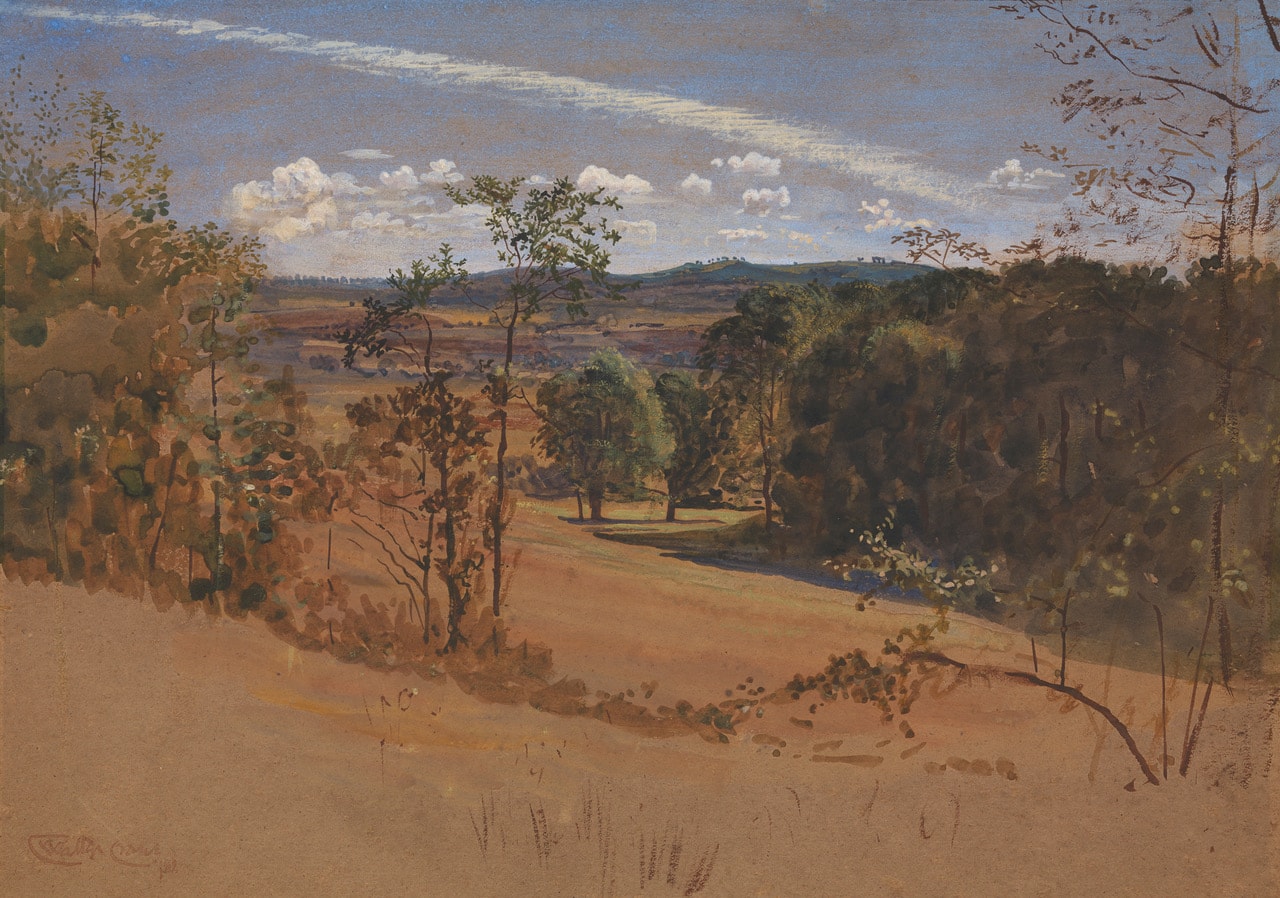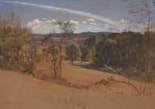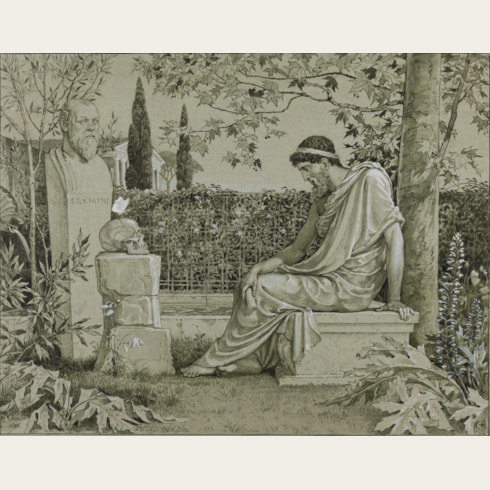Walter CRANE
(Liverpool 1845 - Horsham 1915)
Landscape near Tunbridge Wells, Kent
Sold
Watercolour and gouache on brown paper.
Signed and dated Walter Crane 82 at the lower left.
Signed and inscribed Walter Crane / 63 / View nr. Tunbridge Wells in blue chalk on the old backing board.
237 x 340 mm. (9 3/8 x 13 3/8 in.)
Signed and dated Walter Crane 82 at the lower left.
Signed and inscribed Walter Crane / 63 / View nr. Tunbridge Wells in blue chalk on the old backing board.
237 x 340 mm. (9 3/8 x 13 3/8 in.)
Dated 1882, this watercolour is a fine example of Walter Crane’s interest in a naturalistic depiction of landscape. While he produced landscape sketches throughout his career, Crane only began exhibiting them in the 1880s, first at the Grosvenor Gallery and later at the Royal Watercolour Society, to which he was elected in 1888. As Greg Smith has noted of the role of landscape in Crane’s oeuvre, ‘The first signs of a tension between the naturalistic and the symbolic occurred towards the end of the 1860s and appear as a clear dichotomy in those works executed in Italy 1871-3. Landscapes capturing the beauty of Rome in spring and the Italian countryside…exist next to more public works in which the same themes are explored in symbolic terms. This set the pattern for the rest of Crane’s career as a landscape artist, a naturalistic approach for the private medium of watercolour and a symbolic mode for a public statement in oil or tempera.’
A painter, draughtsman, illustrator and poet who was one of the most significant figures of modern decorative art, Walter Crane was the son of a portraitist and miniature-painter in Liverpool. Settling in London in 1857, he came into contact with the works of the Pre-Raphaelites and the writings of John Ruskin, and began working as an apprentice in the studio of the wood-engraver William James Linton between 1859 and 1862. In 1862 he exhibited a painting of The Lady of Shalott at the Royal Academy, to critical acclaim. Later submissions to the Academy were rejected, however, and Crane chose instead to exhibit at the Grosvenor Gallery. In the early 1870s Crane spent some time in Italy, where he befriended the landscape painter Giovanni Costa, whose influence is evident in Crane’s own landscape style. Strongly influenced by Japanese colour prints, Crane worked as an illustrator of children’s books between 1864 and 1875, and it is as a book illustrator – particularly of fairy tales, of which several books were published each year – that he was best known, not only in England but also in Germany and elsewhere. Crane exhibited his paintings at the Grosvenor Gallery and the New Gallery, and was elected a member of the Institute of Painters in Water Colours and the Royal Watercolour Society. He was a founder member of the Arts and Crafts Exhibition Society in 1888 and was elected a master of the Art Worker’s Guild in 1888 and 1889, producing ceramics, designs for wallpapers, stained-glass and other decorative pieces. He also produced a number of designs for large-scale murals and mosaics for public buildings, although some of these never came to fruition. He worked with William Morris on books published by Morris’s Kelmscott Press, and taught at the Manchester School of Art, Reading College and the Royal College of Art. One of his final significant projects were the four lunette decorations above the staircase of the Royal West of England Academy in Bristol, painted in 1913.





